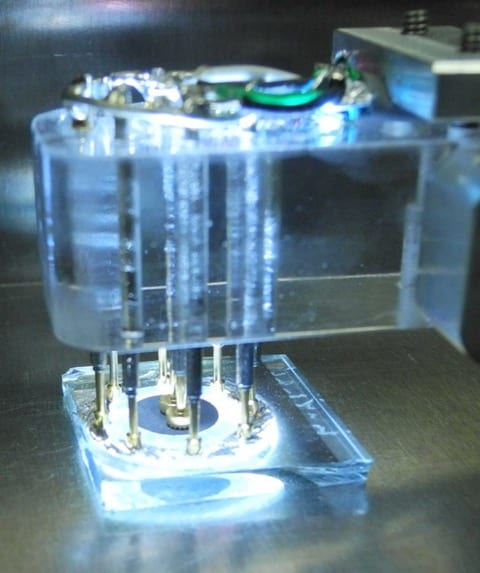
The thin-film materials being tested during development. Courtesy: I Mathews
Topics: Alternate Energy, Internet of Things, Materials Science, Solar Power
Photovoltaic cells made from cadmium telluride (CdTe) – already widely used in solar energy generation – also excel at harvesting ambient light indoors, making them an excellent energy source for the fast-growing Internet of Things (IoT). This is the finding of researchers at the Massachusetts Institute of Technology (MIT) in the US and the Tyndall National Institute at the University of Cork, Ireland, who fabricated low-cost CdTe cells and measured their photovoltaic response when exposed to light from various sources, including LED bulbs.
At present, indoor IoT devices such as wireless sensors are typically powered by batteries. However, study lead author Ian Mathews says that photovoltaic cells would be better because of they require less maintenance and are cheaper and easier to make. In his view, these characteristics present a “significant market opportunity” for CdTe cells in particular, yet researchers have rarely tested their effectiveness at converting ambient light (from incandescent, compact fluorescence, or LED bulbs, for example) into electrical energy. Instead, previous studies of indoor-light energy generation have mainly focused on rival photovoltaic technologies, such as silicon, III-V semiconductors, organic PV devices, and perovskite materials.
Thin-film solar cells make champion harvesters of ambient light, Isabelle Dumé, Physics World
Comments